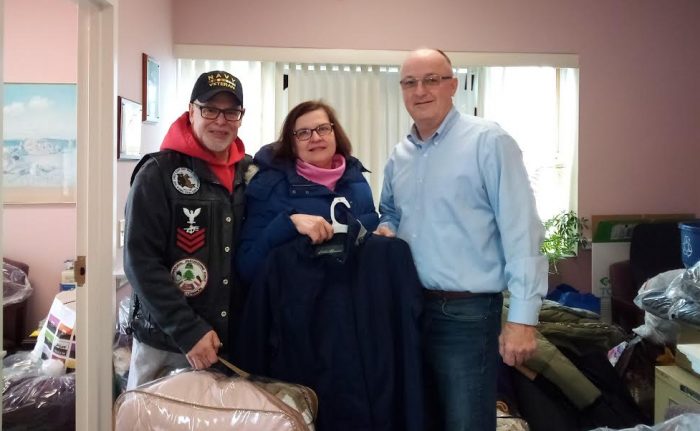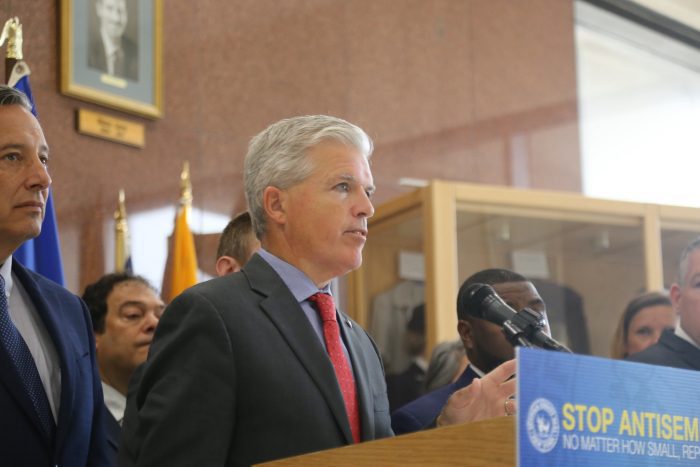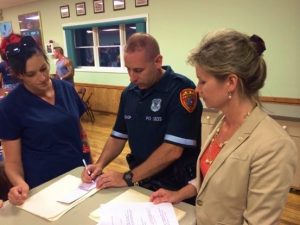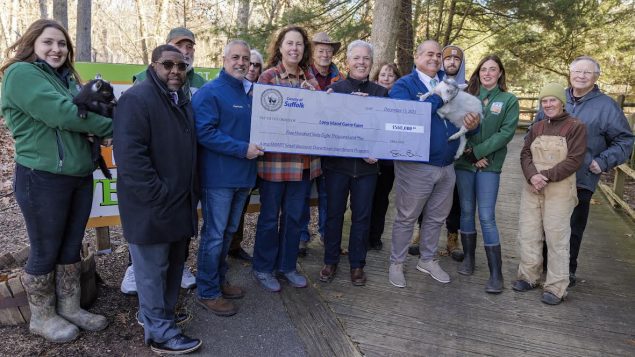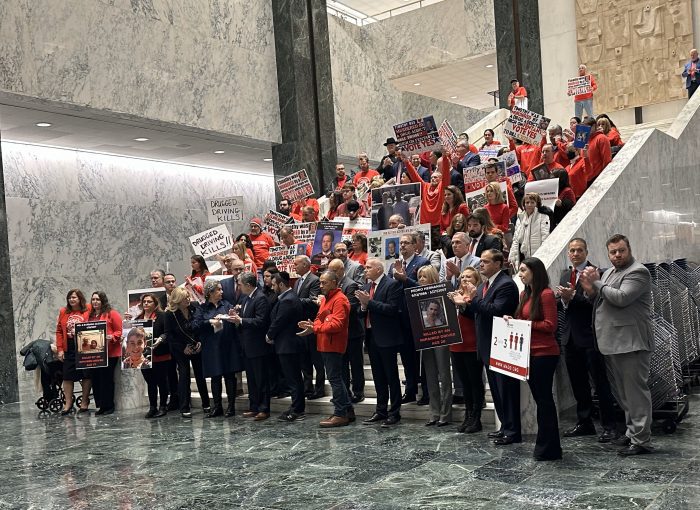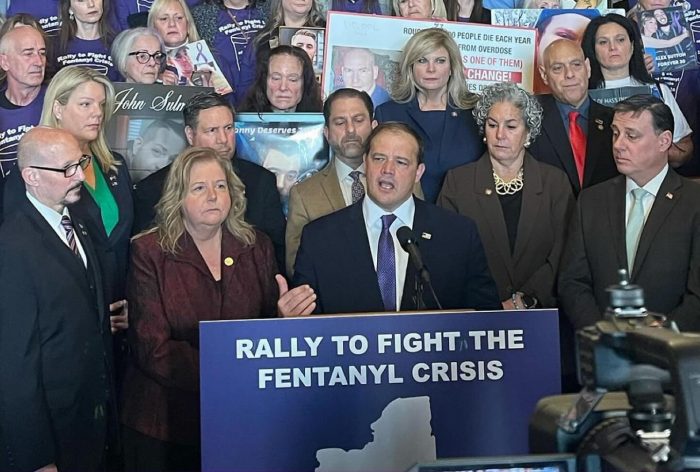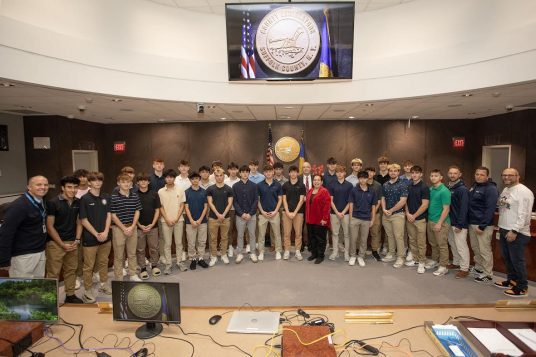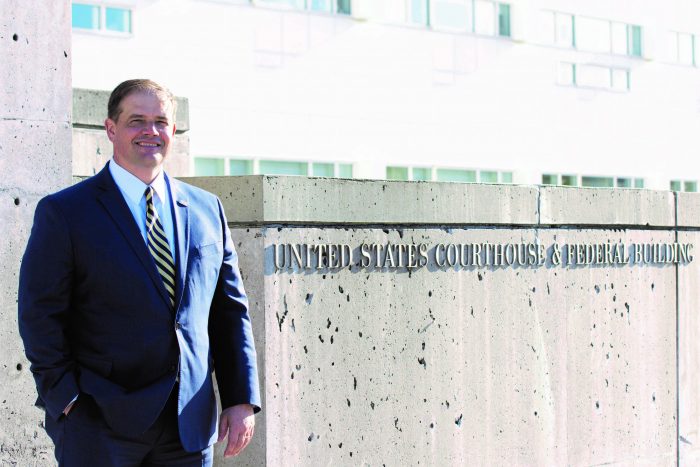On December 15, Suffolk County District Attorney Raymond A. Tierney announced his “Evergreen Initiative” – a combined legislative and law enforcement agenda that aims to halt devastating pollution and dumping at the county’s parks, beaches, and forests.
Joined by County Executive-Elect Ed Romaine, Suffolk County Sheriff Errol D. Toulon, Jr., Crime Stoppers President Patrick Fazio, Brookhaven Supervisor-Elect Dan Panico, and Winter Brothers owner Jim Winters, as well as leadership from the State Department of Environmental Conservation, the Pine Barrens Commission, the State Police, the Suffolk Park Rangers, District Attorney Tierney outlined a multi-point plan to turn the tide on environmental assault.
The Evergreen Initiative will:
1. Raise and sustain awareness of rewards available to citizens who report dumping and pollution under current Suffolk County Law, as well as posting reward signage;
2. Encourage more reporting of environmental crimes by increasing the rewards for tips to 33% of the fines collected by the District Attorney through the criminal justice process;
3. Increase the fine schedule for dumping/polluting on county land to $15,000 for individuals, with corporate fines reaching $25,000;
4. Encourage municipalities to mirror the county fine schedule, so that town and village parks are equally protected;
5. Invest an additional $10,000 into environmentally-friendly covert surveillance equipment and deploy the trip-alert system throughout county parklands;
6. Coordinate with Crime Stoppers and the Suffolk County Parks Watch reporting systems to facilitate easier reporting;
7. Seize and impound all vehicles that are utilized to dump or otherwise pollute public lands;
8. Ensure that fines and clean-up money are used locally in Suffolk County;
9. Putting offenders to work cleaning Suffolk parks and beaches as part of their sentences; and
10. Seek maximum financial penalties on all environmental cases. The combination of increasing fine schedules and reward percentage will mean that a Good Samaritan report of dumping can receive up to $8,250 from fines and up to $5,000 from Crime Stoppers.
District Attorney Tierney also emphasized that the statute of limitations on certain dumping crimes can reach back to 2018 and reports leading to convictions are always welcome and will be rewarded in accordance with the law. As part of the Evergeen Initiative, the increased rewards for reporting dumping and pollution will be posted on the public entrance of every county park.
“I am confident that these measures will make an impact,” said District Attorney Tierney. “Our office will continue to seek maximum financial penalties, which will translate to higher rewards for those who report polluters. All local municipal leaders are encouraged to adopt similar local legislation at the town and village level so that our incentives do not redirect the illegal dumping to your parks. We all must work together so that Suffolk’s natural beauty is universally protected.”
“Over the past year, Brookhaven has conducted more than 750 roadside cleanups and 32 other cleanups requiring heavy equipment for illegal dumping, which has included everything from residential waste to boats, campers and even floating docks. The new Evergreen Initiative will be an important tool in curbing illegal dumping and protecting our environment,” said County Executive-Elect Ed Romaine. “I want to thank District Attorney Tierney for his leadership on this issue to protect our open space, our groundwater and our residents from the impacts of illegal dumping.”
“The Suffolk County Sheriff’s Office has been involved in the patrol of the Central Pine Barrens region for the past three decades and we have seen numerous cases of illegal dumping. We’ve discovered garbage of all sorts, from paperwork and yard debris to larger items like furniture, mattresses and even boats,” said Suffolk County Sheriff Errol D. Toulon, Jr.
“Illegal dumping is lazy, illegal and harmful to our environment and our island’s resources. Make no mistake, if you are dumping illegally in Suffolk County, especially in our pine barrens, we will find you and you will be held accountable.”
“D.A. Tierney’s Evergreen Initiative, supported by County Executive-elect Romaine, Sheriff Toulon, and other elected officials, provides a new dimension of deterrent to tackling illegal dumping in Suffolk County Parklands and the Pine Barrens Region,” said Chief of the Suffolk County Parks Rangers Steve Laton. “Suffolk County Park Rangers remain committed to working with our law enforcement partners to thwart illegal dumping in Suffolk County.”
“As the owner of Long Island’s largest solid waste management and recycling firm, I would like to applaud District Attorney Ray Tierney for leading the fight against illegal dumping,” said Jimmy Winters, Owner of Winter Bros. “The actions announced by him today will help disincentivize the dumping of harmful materials in our ecosystem and hold criminal actors accountable.”
“Crime Stoppers takes all criminal activity seriously, particularly crimes against our environment,” said Crime Stoppers President Patrick Fazio. “Suffolk County residents can contact Crime Stoppers at 1-800-220-TIPS to report dumping or other pollution and receive up to $5,000 for their tips.”
“Illegal dumping is selfish and irresponsible and has a negative impact on our environment and our communities,” said New York State Police – Troop “L” Long Island – Troop Commander Major Stephen J. Udice. “The New York State Police will continue to work with our law enforcement and prosecutor partners to hold those accountable that choose to irresponsibly and illegally engage in the act of illegal dumping.” I
n addition to increasing fines, rewards, and signage, District Attorney Tierney’s Evergreen Initiative will allocate more than $10,000 worth of additional environmentally friendly covert surveillance equipment, such as cameras, drones, and license plate readers, to undisclosed park lands to catch those who pollute in the act.
Another component of District Attorney Tierney’s Evergreen Initiative will partner his office’s Biological, Environmental, and Animal Safety Team (BEAST) Unit and Asset Forfeiture Bureau with local police departments to penalize those who are caught in the commission of an environmental crime by having their vehicles impounded and held until all fines are paid off – including the cost of clean-up. The fines collected will be kept locally and used to cover all costs of prosecution. In addition, offenders will be put to work cleaning Suffolk County beaches and trails, planting trees, sorting recycling, and contributing efforts to the county’s environmental organizations.
Through the Evergreen Initiative, an economy will be created that works for Suffolk County’s local ecosystem. 5 To report pollution, individuals may use any of the following (in an emergency or to report a crime in progress always dial 911)
Suffolk County Parks Watch: [email protected] or 631-854-1423
The Suffolk County Pine Barrens Complaint Line 877-BARRENS
Crime Stoppers: 1-800-220-TIPS or www.p3tips.com or download app at P3Tips
Suffolk County DA: suffolkcountyny.gov/da/contact-us (Report Pollution tab)
The District Attorney will track all reports that lead to convictions so that appropriate rewards are paid.


